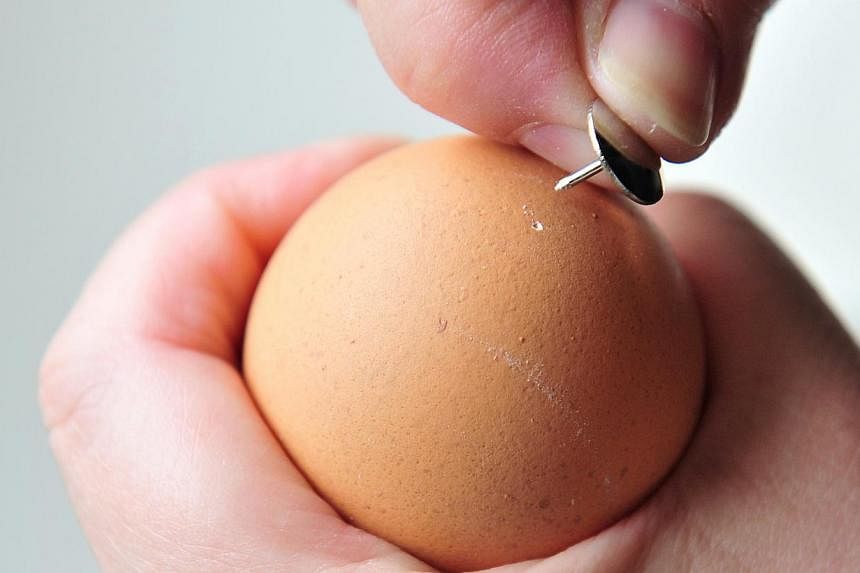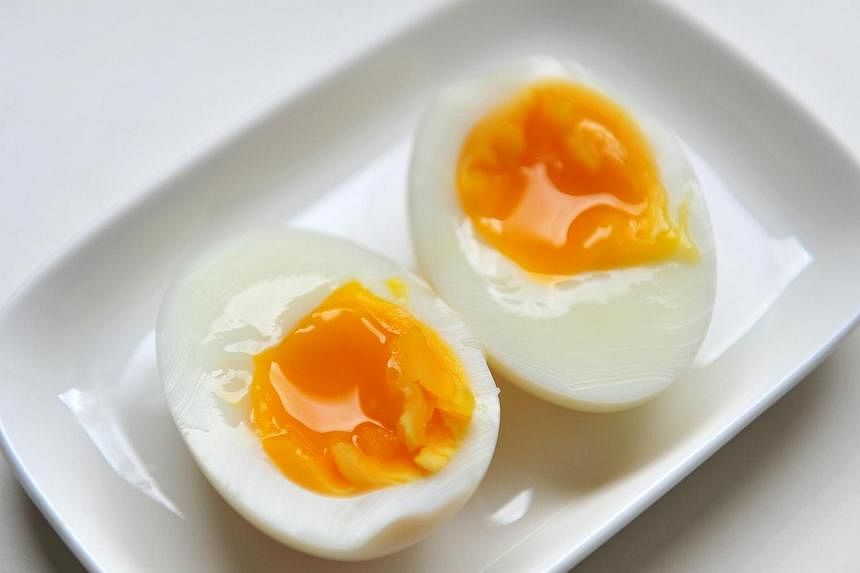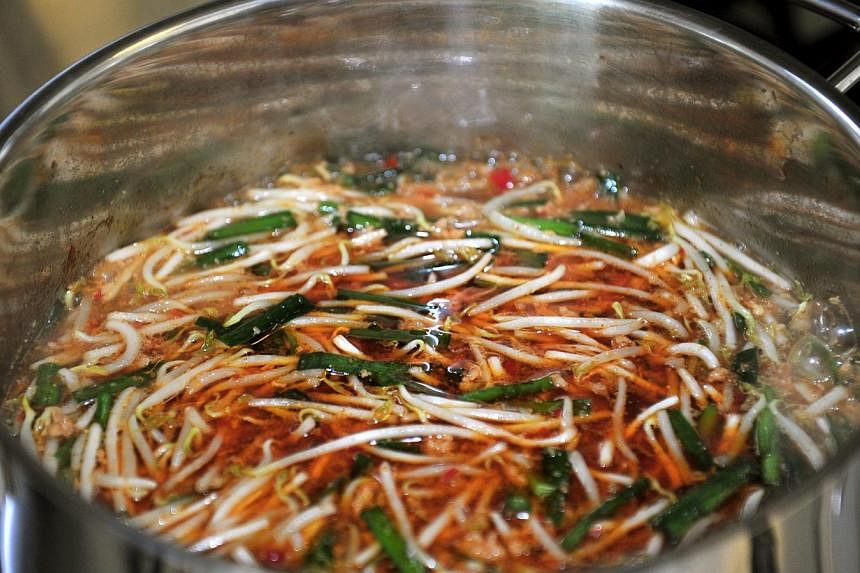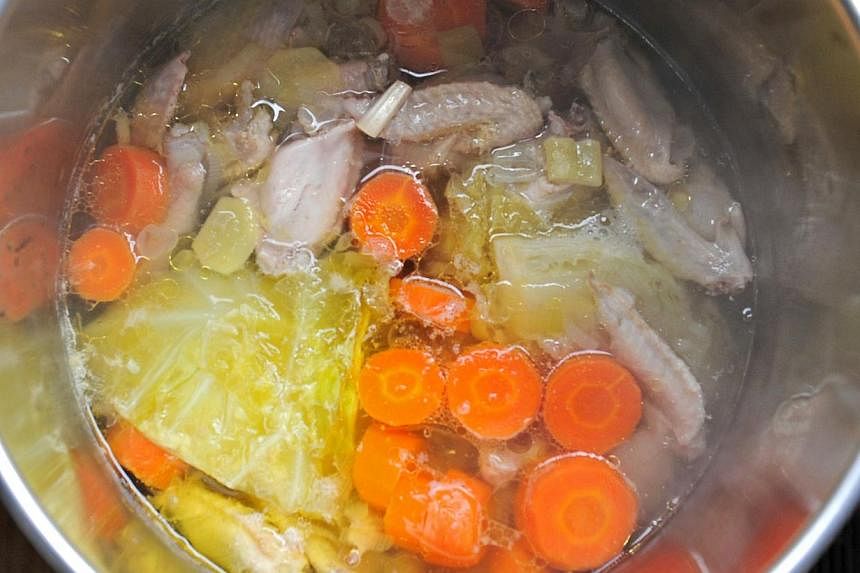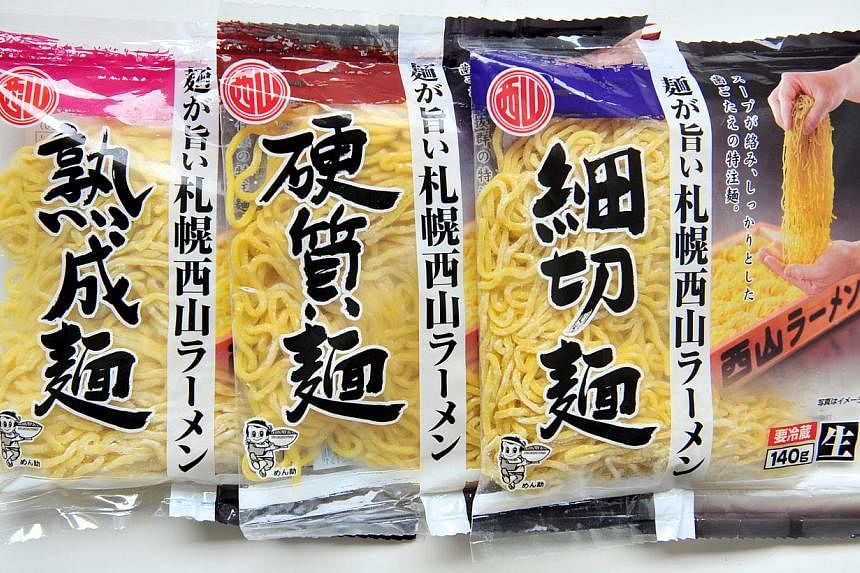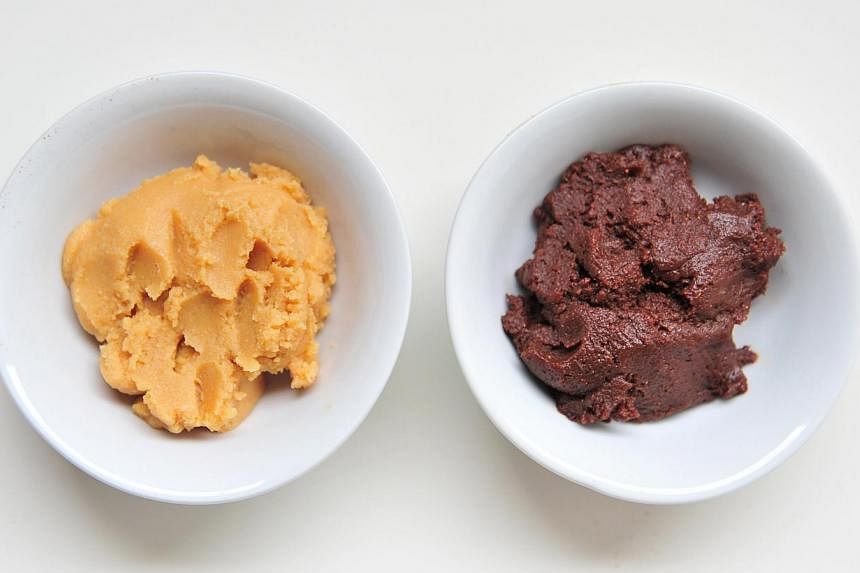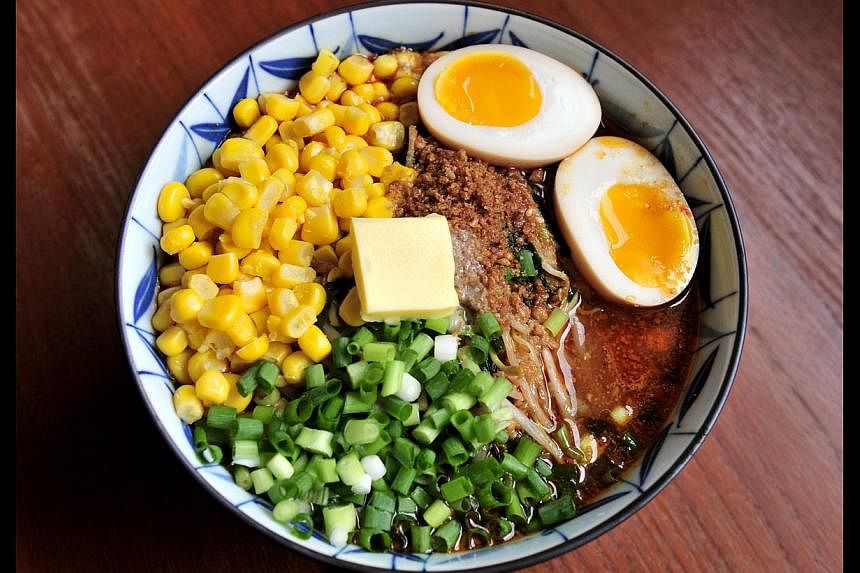After making miso ramen at home, I send a photo of one of the finished bowls to a Japanese friend, together with a photo showing the broth simmering in the stock pot and the mise en place for the miso base.
The reply makes me laugh so hard. "From the broth? No one does that!! Completely crazy."

In Japan and Singapore, it is much easier to go out for a bowl of ramen, given the myriad choices in both countries. Even those who prefer to eat it at home would buy packs of instant ramen, which come with pouches of soup base and flavoured oils. They simply add their toppings of choice for a quick meal.
Indeed, you might feel exhausted just reading the interminable ingredients list and the multiple steps, and yes, making it is tiring.
However, the important parts of the recipe can be made ahead of time and put together on Ramen Day. It is easy to make the broth one day and let it sit in the fridge for three to four days. Before using, spoon out the solidified fat that sets on the surface of the stock. The miso base can also be made up to a week ahead and refrigerated.
Broken down this way, making ramen at home is not such a chore. In fact, nothing beats the satisfaction of eating a bowl of ramen made almost from scratch.
I say almost because even I am not crazy enough to make the noodles by hand. Japanese supermarkets sell ramen in packets chilled or frozen and in varying degrees of thickness.
The recipe is adapted from Takashi's Noodles, a cookbook featuring Japanese noodle recipes by chef Takashi Yagihashi ($42.03 from www.kinokuniya.com). It makes a robust bowl of noodles with a bit of spice.
INGREDIENTS
For the broth
2kg chicken bones or chicken wings
4 litres water
2 medium-sized carrots, about 300g
1 Japanese leek (negi)
500g green cabbage
1 head garlic
50g ginger
10g kombu
125ml sake
For the miso base
1 medium onion, about 120g
20g ginger, peeled
4 to 5 cloves garlic, peeled
2 Tbs sesame oil
200g minced pork
130g white or shiro miso
65g red or aka miso
25g ground white sesame seeds
4 Tbs hoisin sauce
2 to 3 Tbs hot bean paste (doubanjiang)
3 Tbs shoyu
For the ramen
2 to 2.2 litres chicken broth
2 Tbs vegetable oil
500g beansprouts
10g chives, cut into 2 to 3cm pieces crosswise
4 140g packs ramen (from Japanese supermarkets)
1 432g can of corn kernels, drained
4 tsp ground white sesame seeds (from Japanese supermarkets)
4 to 5 stalks scallions, sliced
4 Japanese marinated soft boiled eggs
50g cold butter (optional)
METHOD
1. Make the broth: Rinse the chicken bones or wings under running water. If using wings, use a pair of kitchen shears to separate each wing into tip, flat and drummette. Place the chicken or bones in a large stockpot and add the water. Bring to a boil over high heat. When it comes to the boil, skim off the white froth that floats to the top.
2. While the water is coming to a boil, prepare the other ingredients. Peel the carrots and chop into 2cm-thick rounds crosswise. Slice the white part of the negi and discard the green part. Remove the outer leaves of the cabbage and cut into large wedges. Slice the whole head of garlic in half crosswise, skin still attached. Peel and slice the ginger. Wipe the kombu on both sides with a damp paper towel.
3. After skimming the broth, add the vegetables, garlic, ginger, kombu and sake. Bring to a boil again, skim and turn heat down to medium low.
4. Let it bubble for 21/2 hours. Strain the stock using a fine mesh sieve. You should have 2 to 2.2 litres of stock. If not using immediately, let cool completely and refrigerate up to four days.
5. Make the miso base: Cut the onion into chunks, slice the ginger and halve the cloves of garlic. Place these ingredients in a chopper or food processor and blitz until finely chopped. Scrape out into a bowl.
6. Heat the sesame oil over medium-low heat. Add the onion mixture and stir-fry until fragrant, about three minutes. Add the pork and turn heat to medium. Break it up with a spatula. Stir to mix into the onion mixture and continue moving it around the pan until the pork is cooked, four to five minutes.
7. Add the miso pastes, the ground sesame seeds, hoisin sauce, hot bean paste and shoyu and continue cooking until all the ingredients are well mixed. If not using immediately, spoon into a container and refrigerate for up to a week.
8. Finishing the ramen: Bring the chicken broth to a boil in a large pot. Add the miso base and stir to mix well. Bring back to a boil and lower the heat to medium low.
9. Heat the vegetable oil in a large frying pan over medium heat. Cook the breansprouts and chives until both are wilted. Add them to the broth and bring to the boil.
10. Bring a medium pot of water to the boil. Add the ramen and cook to your preferred doneness. Remember that the noodles will be sitting in piping hot soup, so do not overcook. Drain the noodles and divide among four large bowls. Divide the soup, vegetables and meat among the four bowls.
11. Divide the corn kernels, ground sesame seeds and scallions among the bowls. Slice the eggs in half and place two halves on each bowl. If using butter, cut the 50g slab into four equal pieces and top each bowl with a piece. Serve immediately.
Serves four generously
JAPANESE MARINATED SOFT BOILED EGGS
These delicious eggs are called ajitsuke tamago or nitamago. They can be maddening to get right. Many, many eggs were sacrificed in this quest for easy-to-peel nitamago with squidgy yolks that are liquid in the centre. I like them this way because a completely liquid yolk will just spill out when you cut the eggs in half.
The most important tip for success is to "age" the eggs for at least six days before cooking. Older eggs are easier to peel.
INGREDIENTS
6 eggs, each weighing about 60g, at room temperature
150ml water
150ml sake
150ml mirin
75ml shoyu
1.2 litres water
METHOD
1. Buy the eggs six to seven days before you want to cook them.
2. On the day of cooking, pour the water, sake, mirin and shoyu into a small saucepan set over medium heat. Bring the marinade to a gentle boil, turn off the heat, take the pan off the stove and let cool completely. Heating the marinade burns off some of the alcohol, allowing the shoyu flavour to come through.
3. Bring 1.2 litres of water to boil over medium high heat in a small pot. I used one that is about 16cm in diameter. Set a timer for 6 minutes.
4. Using a thumbtack, make a small hole in the rounded, fatter end of the egg. The thumbtack should just break the shell. Do not drive it right into the egg.
5. When the water comes to a rolling boil, carefully place the eggs in the pot. I used silicone-tipped tongs but a slotted spoon will also work.
6. Start the timer when all the eggs are in and let them cook uncovered over medium high heat.
7. With three minutes remaining, make a ice bath for the eggs.
8. For eggs with a soft, fudgy yolk, cook for the full 6 minutes. For eggs with yolks that are fudgy on the outside and liquid in the middle, cook for 5 minutes and 45 seconds. For eggs that have more runny yolks and with whites that are just barely set on the inside, cook for 5 minutes and 30 seconds.
9. Turn off the heat and transfer the eggs to the ice bath. Let them sit for 5 minutes.
10. Using the back of a teaspoon, gently crack the shells. Place each egg back in the ice bath after they are cracked. When they are all done, start peeling them, making sure you remove the membrane.
11. Pour the cooled marinade into a container that will hold the eggs snugly. Place the eggs in the marinade.
12. Fold a paper towel into quarters and submerge it in the marinade, making sure it is totally soaked in the liquid. The paper towel will stop the eggs from bobbing up. Cover the container and marinate in the fridge for four to eight hours. The longer you soak, the tougher the whites become. Discard the marinade. If not using immediately, store the eggs in a covered container in the fridge for up to three days. Warm the eggs in ramen broth before using, or in warm water if eating as a snack.
Makes six eggs
